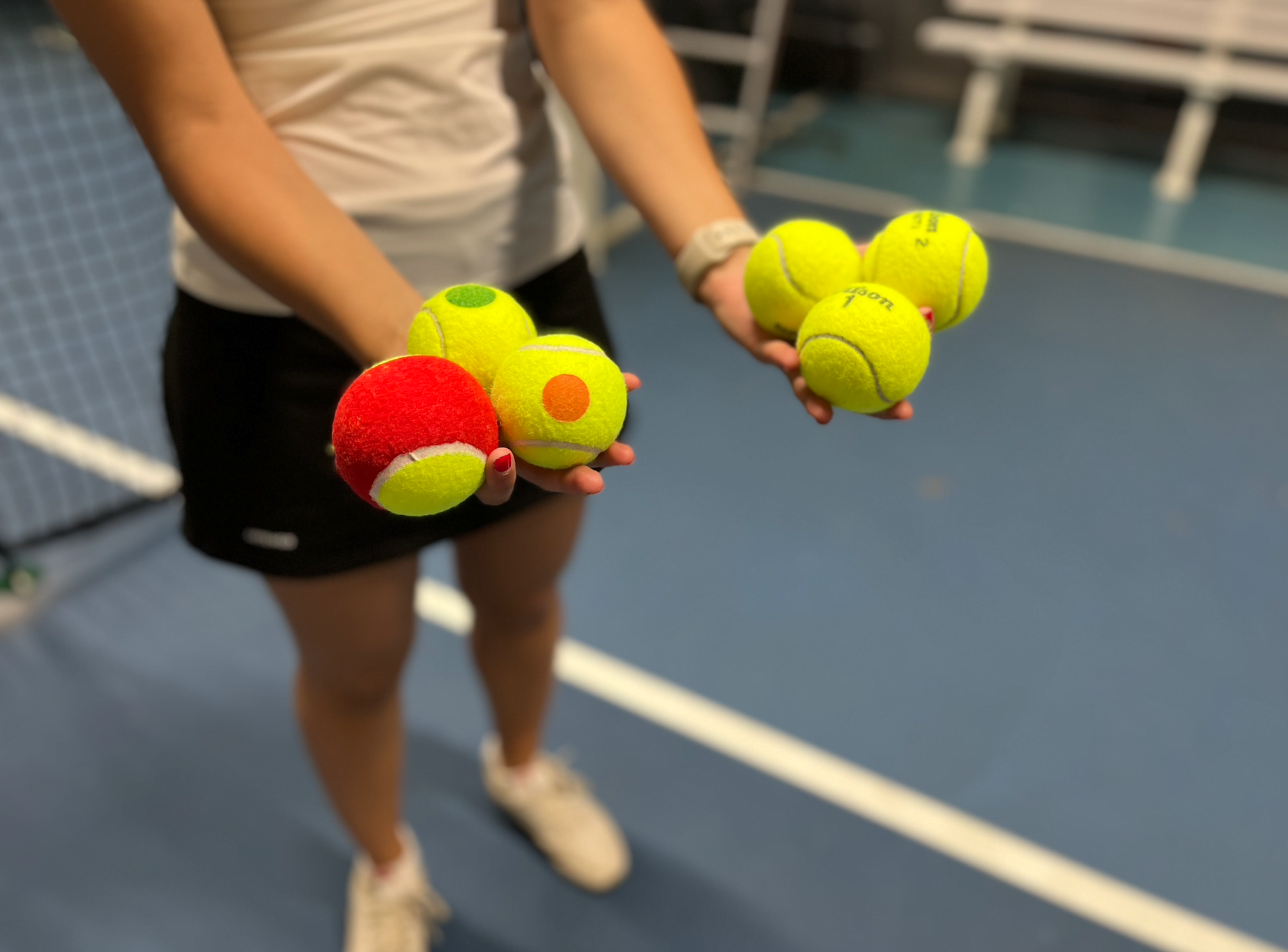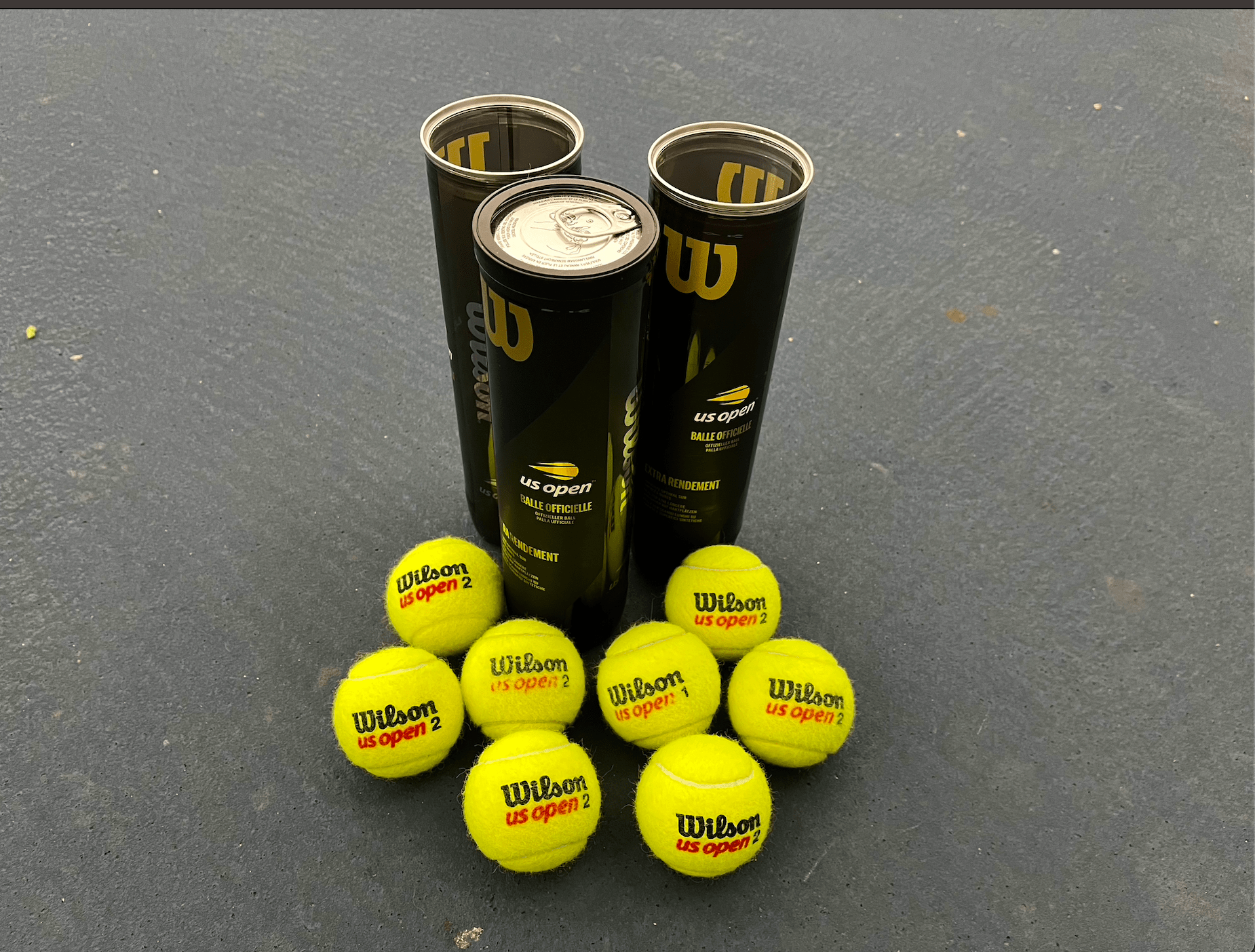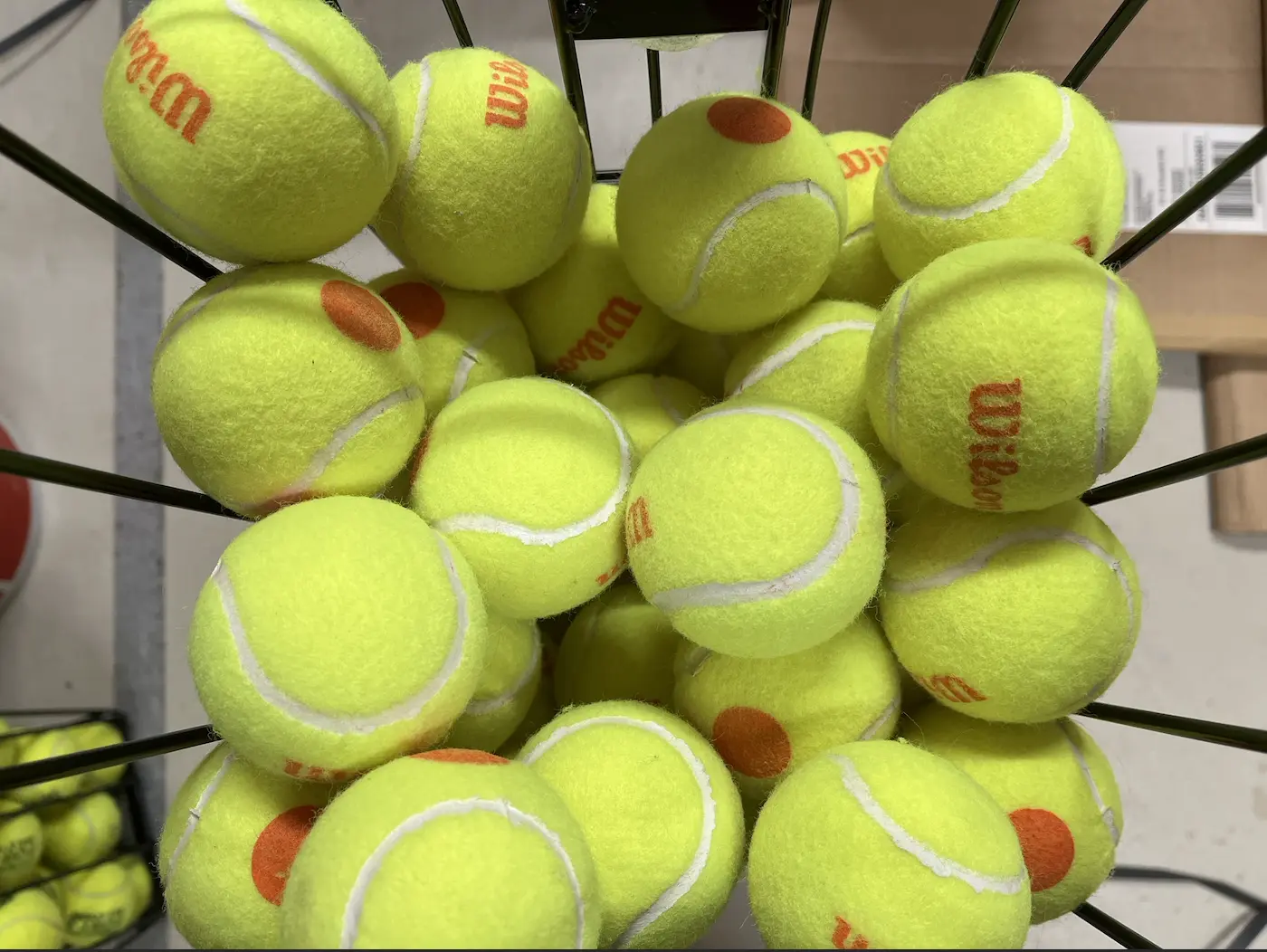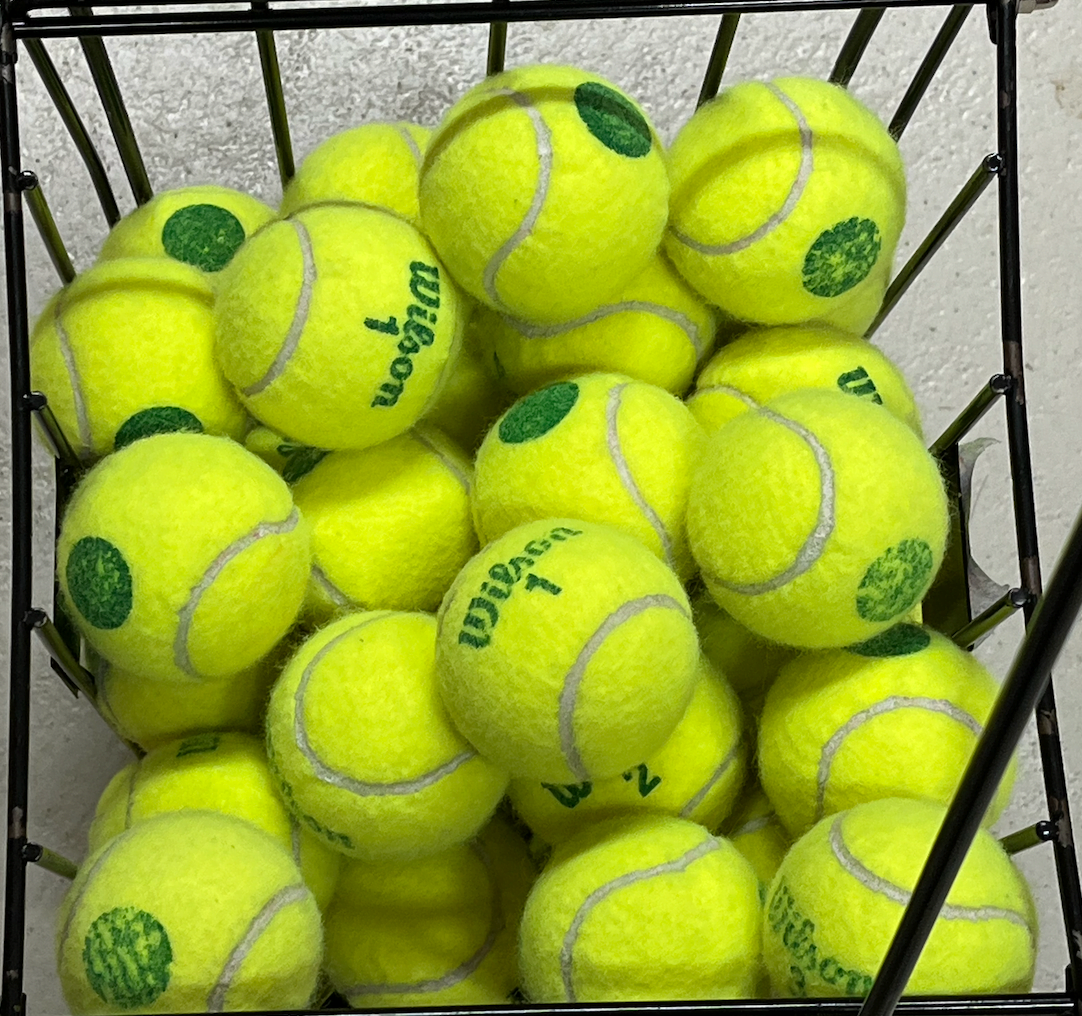You’ve probably seen many different tennis balls in the shop and wondered what they are intended for.
This article explains the different types of tennis balls so that you can find the right tennis ball for your training and playing needs.
This article contains affiliate links.

Different Tennis Ball Types
- Different Tennis Ball Types
- Read More
Pressurized and Non-pressurised Balls
In tennis, there are many balls for a variety of purposes. However, tennis balls can be divided into two main categories: pressurized and non-pressurized balls.
So, what are pressurized and non-pressurized balls? In simple terms, pressure balls are balls filled with compressed air and intended for playing purposes (hard balls).
Unpressurised balls are balls without compressed air inside, but with a rubber structure to give the ball a bounce.
Non-pressurised balls are mainly intended for training purposes. Pressurized balls are, thanks to the pressured air, much faster balls compared to non-pressurized balls and this is something to keep in mind when buying tennis balls.
Official Tennis Balls
Official balls are fast, high-bouncing balls designed for competitive playing and training. They can be further divided into three categories:
- Slow balls (Extra Duty)
- Medium-speed balls (All Court)
- Fast-balls (Regular Duty)
Slow Tennis Balls (Extra Duty)
Extra Duty balls are designed for rough courts, for example, outdoor courts. They have a thicker felt layer, which allows them to fluff more slowly and therefore last longer.
The thicker felt layer makes Extra Duty balls more durable and slower, making them ideal for beginners.
Examples of Extra Duty Tennis Balls
- Wilson US Open Extra Duty
- Dunlop Extra Duty Balls
Medium Speed Balls (All Court)
All Court balls are designed for all court surfaces. In Europe, however, All Court balls are mainly used on hard courts such as Plexipave or velour (carpet) courts.
All Court balls also have a slightly thicker felt layer, so they play slower but are faster than Extra Duty balls. These balls are perfect for beginners who want a little more pace to their game.
Examples of All Court Tennis Balls
- Wilson Tour All Court
- Babolat Team All Court
- RS All Court
- Dunlop Australian Open
Fast Tennis Balls (Regular Duty)

Regular Duty balls are designed for softer pitches such as grass pitches and some indoor pitches. They have a thinner felt layer, which allows them to play faster but also wear faster.
Regular Duty balls are therefore suitable for players who want a faster ball and don’t mind the short lifespan of the ball.
Examples of Regular Duty Tennis Balls
- Wilson US Open Regular Duty
- Wilson Championship Regular Duty
- Dunlop ATP Regular Duty
Official Tennis Balls Summarised
- Hard balls are balls designed for competitive and more demanding training
- Hard balls are available at 3 different speeds: slow, medium, and fast
- Slow balls are more durable than fast-balls
- Extra Duty balls are suitable for rough and hard courts such as outdoor courts
- All Court and Regular Duty balls are suitable for soft courts such as grass courts.
Training Balls (“Dotted Balls”)

Training balls are soft and slow balls designed for beginners. They can be pressure-free or low-pressure balls. This means they do not bounce as high as hard balls and are therefore easier to hit.
Red Tennis Balls
Red balls are the softest training balls and are 75% slower than hard balls. They are designed to give young players as many successes as possible and thereby build their confidence on the tennis court.
Red balls are recommended for players under the age of 8 because they bounce up to a maximum height of about 1 meter.
Due to the softness of the balls, red balls are usually played on a shortened mini tennis court, i.e. 1/4 court with a mini tennis net.
Examples of Red Tennis Balls:
- Wilson Started Red
- Babolat Red Felt
Orange Tennis Balls

The orange balls are the next step after the red balls. They are 50% slower than hard balls and bounce to a height of around 105-120cm. The purpose of orange balls is to teach players to react to faster shots and to move better on the court.
Orange balls can be played with a large net and midi tennis court, which has a shorter backcourt. Orange tennis balls are suitable for players between 8 and 12 years old.
Examples of Orange Tennis Balls:
- Wilson Starter Orange
- Babolat Orange
Green Tennis Balls

Green balls are the last step before moving on to official balls. They are 25% slower than hard balls and can bounce as high as 120-135cm.
Green tennis balls are designed to teach players how to move on a full court. Green balls are suitable for players aged 10+.
Examples of Green Tennis Balls:
- Wilson Starter Green
- Wilson Starter Play
- Babolat Green
Training Balls summarised
- Red balls are the slowest training balls and are suitable for young beginners
- Orange balls are medium-speed training balls and are suitable for more experienced players
- Green balls are the fastest training balls and are suitable for experienced players who are moving up to hard balls
Where Can You Buy Tennis Balls?
Tennis balls can be found at the lowest prices in stores and online shops such as:
US 🇺🇸
UK 🇬🇧
If you play tennis often and use a lot of balls, you can also buy balls in larger quantities, i.e. in cases. Buying a case of tennis balls usually saves you around €2 per tube.
Examples of tennis ball cases:
EU 🇪🇺
UK 🇬🇧
FAQ

Can adult players play with colorful training balls?
— Yes, it is possible and even recommended that beginners start playing with orange and green balls before moving on to official balls.
When should you change to new balls?
— This depends a lot on the balls and the player. Official balls will stay good for about 2-4 weeks if you play once a week.
For more active players, it would be advisable to change balls every 2-3 weeks, as they will bounce much less well and disrupt the flow of the game when they are worn out.
Colorful training balls can be played with for about 1-2 months
How do you know when tennis balls should be replaced?
— The first sign you can notice when a ball is worn out is the ball’s fluffiness. If the felt on top of the ball has become very fluffy, it is a good idea to replace the ball, as fluffiness slows down the speed of the ball considerably.
Another sign is the height of the bounce of the ball. If you notice that the ball is no longer bouncing high, or sometimes you feel that the ball is not bouncing nearly as high as it should, then this is a sign that the ball should be changed.
The third sign is sound. More experienced players will be able to identify a worn ball by the sound of the shot. A worn-out ball usually makes a very loud and muffled sound on impact, indicating that there is not enough pressure left in the ball.
Is it worth buying balls for different types of courts?
— This depends a lot on the player and the ball. If you play a lot on a certain court type, it can be useful to buy balls that are suitable for that type. For example, clay court balls for a clay court. However, there are versatile balls such as All Court balls that can play well on any court type.
As a general rule, you can play on all courts with slower balls (Extra Duty or All Court), but fast-balls (Regular Duty) are mainly recommended for softer courts.
– I would personally recommend Extra Duty balls. Wilson’s US Open Extra Duty especially has proven to be a good, versatile ball that is fun to play with.
What does the number on the tennis ball mean?
– Some tennis balls have a number printed on them, which can be 1,2,3 or 4. The number does not refer to the playing characteristics of the ball but is printed to make it easier to tell the balls apart. I.e. if, during a ball game, the ball escapes to an adjacent court.
How much does a tennis ball weigh?
– The tennis ball weighs around 56.0-59.4 grams and has a diameter of 6.53-6.86 centimeters.
How should tennis balls be stored to make them last as long as possible?
– Tennis balls should be stored at room temperature and out of the sunlight to keep the pressure inside the balls at a good level for as long as possible. In winter, for example, it is best to avoid storing tennis balls in a cold car, as the pressure inside the balls will be reduced if they get cold.
